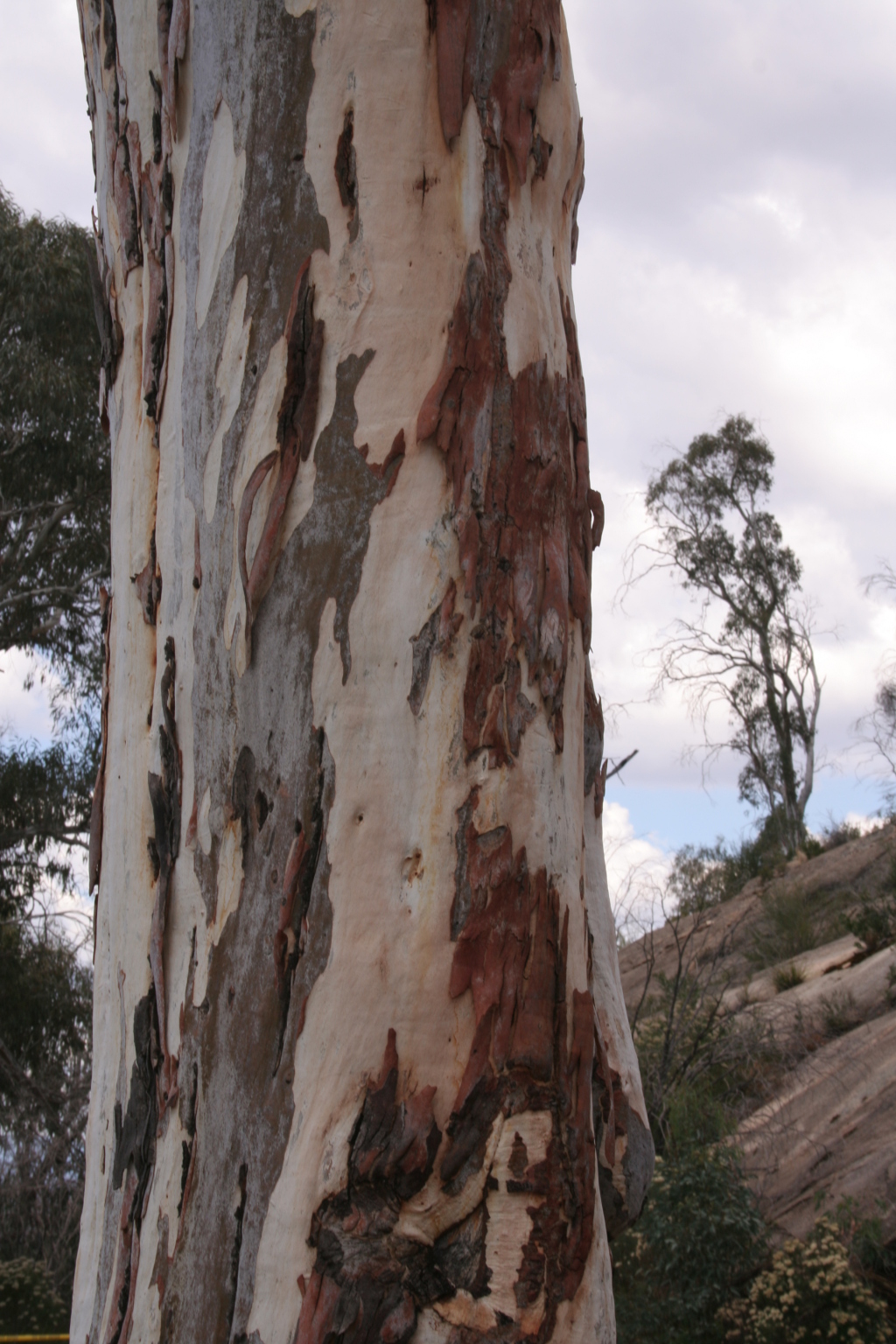Eucalyptus mannifera subsp. mannifera
Brittle GumTree to 25 m tall; bark smooth, white, powdery, or with patches of yellow or red, often highly coloured in late summer-early autumn. Juvenile leaves shortly petiolate, opposite but soon becoming alternate, linear, falcate or narrowly oblong, to 10 cm long, 1.3 cm wide, blue-green to glaucous; adult leaves petiolate, alternate, narrowly lanceolate to lanceolate, 8–15 cm long, 1–1.5 cm wide, concolorous, dull, blue-green to grey-green; reticulation dense, with numerous, mostly island oil glands. Inflorescences axillary, unbranched; peduncles to 0.6 cm long, 7-flowered; buds pedicellate, broadly fusiform to ovoid, to 0.5 cm long, 0.3 cm diam., scar present; operculum conical to hemispherical; stamens inflexed; anthers dorsifixed, cuneate; ovules in 4 vertical rows; flowers white. Fruit pedicellate, hemispherical, to 0.5 cm long, 0.4cm diam.; disc raised-annular; valves 3, slightly exserted; seed grey-brown, flattened-ellipsoid, shallowly reticulate, lacunose, hilum ventral. Flowers Jan.–Feb.
VVP, VRiv, GipP, CVU, NIS, EGL, EGU, HSF, HNF, MonT, HFE, VAlp. Widespread on poor, usually shallow, rocky soils in the north-east and east, e.g. Mt Timbertop, Mt Baranduda, Paradise Falls, Mt Granya, Mt Buffalo, Gelantipy, Mottle Range, Bonang, occasionally extending to subalpine areas (e.g. Brumby Point, Nunniong Plateau) where typically a small, crooked tree.
Brooker, M.I.H.; Slee, A.V. (1996). Eucalyptus. In: Walsh, N.G.; Entwisle, T.J., Flora of Victoria Vol. 3, Dicotyledons Winteraceae to Myrtaceae, pp. 946–1009. Inkata Press, Melbourne.
 Spinning
Spinning

